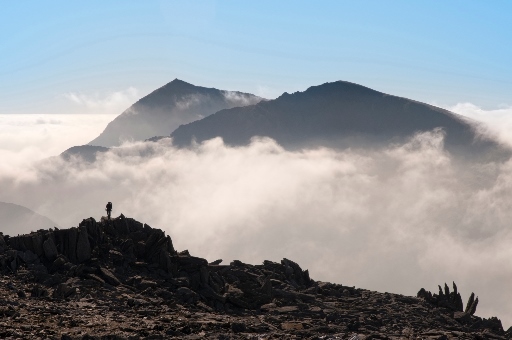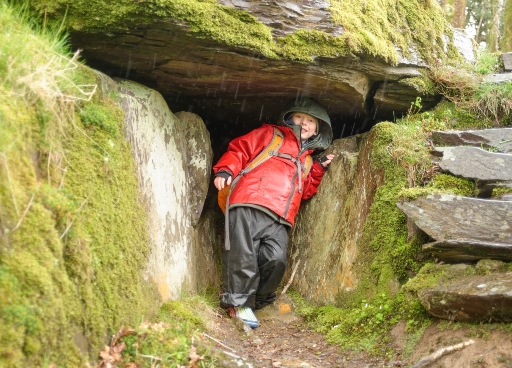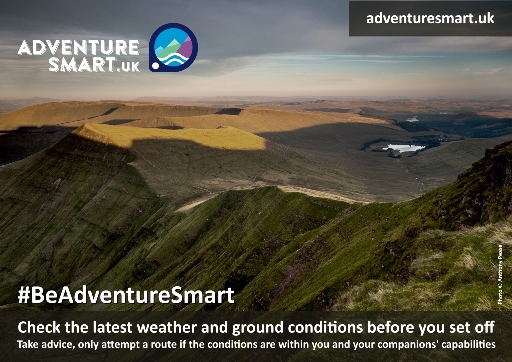Have you seen the forecast?
This post is greater than 6 months old - links may be broken or out of date. Proceed with caution!

We are renowned for being a bit obsessed with the weather in the UK. According to social anthropologist Kate Fox (2014)1, at almost any moment, at least a third of the population is either talking about the weather, has already done so or is about to do so. Why the fascination? Well, there’s a lot to talk about - several features of Britain’s geography make the weather here very changeable and famously fickle.
Here’s why…
- Britain’s position near the Atlantic puts us on the track of storms which are deepened and steered in our direction by the jet stream, a high, fast-flowing river of air.
- Britain is often caught between competing air masses – warm, cold, sunny, cloudy, showery, wet or dry, depending on where the winds blow from and the time of year.
- The Gulf Stream makes the British climate milder than it should be given its northern latitude. This milder air can hold more moisture, giving the UK its wet, volatile, and changeable weather.
So given the capricious nature of the British climate, it’s surprising that people frequently don’t pay attention to how the weather might affect their outdoor adventure. Knowing about the weather and understanding how it will affect your activities can make a big difference as to how you feel, whether walking the dog, climbing a mountain or spending time in or on the water.

AdventureSmart.UK and partner, the Met Office, are helping people understand how to plan for a great day, whatever the weather! Here are our tips to help people embrace the infamous UK weather.
Monitor previous weather conditions for the area to assess its effects on your planned environment:
Has it been raining? Have storms blown trees down? Any flood warnings? Avalanche risk (SAIS)? How will these impact your activity?
Check the current and forecasted weather for the duration and location of your activity, including the mountain areas & summits and coastal & sea areas.
Check the forecast (Met Office / Met Éireann) before deciding where to go. Use it to your advantage by seeking out the best conditions and therefore your best options. An area forecast such as the Met Office Mountain Forecast can help here as it describes the conditions across a wider area with detailed descriptions of precipitation, winds, temperature and visibility at different heights.
The UK hills are not as high as the Alps but conditions can swing from one extreme to the next, sometimes within minutes. The weather is often completely different on the summits than down in the valleys, so a forecast for hill walkers is essential. Don’t get caught out because you checked the forecast for your setting off point but not for the summit, or you checked the morning forecast but not the afternoon and missed that approaching storm. Keeping a close eye on the current weather and updating as frequently as possible will mean you are able to plan appropriately and make good decisions. Being flexible is key to having a successful and safe outing. It’s ok to choose a lower-level route or turn back and save the hilltop to enjoy on a better day.

Checking the weather forecast before you set off is just as important before heading out for a day on the water - whether that be sea, lake or river. While at sea regularly monitor coastguard maritime safety information broadcasts for updates. The Inshore Waters forecast, includes winds, sea states, weather and visibility for up to 12 miles offshore for the whole UK coastline. The Met Office website also provides Beach Forecasts and Tide Times for sites around the coast.
Good to know…
The most important weather-related things that could affect your planned activity are:
- Wind speed and direction – strong winds can make conditions feel much colder. They may reduce your speed considerably and blow you off balance, making many activities much more hazardous and less enjoyable.
- Temperature – knowing the temperature will help with choosing the most suitable clothing to wear and items to carry, just in case. Sun protection if it’s hot; lots of layers if it’s cold.
- Precipitation (rain, hail, snow etc.) – whether wet weather is forecast or not, it’s always worth carrying waterproof clothing. Walking boots provide good grip as well and keep your feet dry on land. Environmental conditions are also affected by precipitation e.g. slippery rocks, waterlogged paths, raised water levels in rivers and lakes. On some days postponing your watersport adventure until water levels have dropped may be the best option.
- Visibility – low cloud, mist and fog will certainly reduce your ability to see your planned route. When the fog descends, being able to navigate using a map and compass is essential to avoid getting disorientated and lost. It may be best to alter your plans to keep under the cloud base for better views and easier route-finding or postpone until the visibility improves.
- Height at sea level and above – whether at sea level or on a mountain summit, the previous and current weather will either have had or is having a significant effect e.g. strong winds across open seas are likely to present a choppy sea state both out to sea and along the coastline; for every 200m of ascent in the mountains, air temperature decreases by 1 to 2°C so you might be enjoying a sunny, dry and wind-free day at sea level but the mountain tops are likely to be very different and conditions can change very quickly. Be prepared for all eventualities.
If you are heading for the coast, it’s not just the weather that can catch you out.
There are many RNLI callouts each year to people who have been caught unaware and cut off by the tide. Tide times and heights vary throughout the month and can easily catch you out if you haven’t checked them. A beach that was clear yesterday at 5 pm might be completely covered in water at the same time today. Tide times can also differ dramatically for sections of the coast that are geographically quite close.

Although tides have a reputation for being unpredictable, they actually follow a timetable more reliable than most trains! You can check the tide times for the location you are planning to visit by consulting the www.tidetimes.org.uk
If you’re doing something new or going somewhere new, why not go with a qualified guide/instructor or sign up for some training?
There are lots of enthusiastic and knowledgeable guides and instructors who can help you develop your skills, follow the links below for specific activity courses, they can take your adventure to a whole new level, but in a good way!
Canoeing and other paddlesports, including SUP
Sailing, Windsurfing and Powerboating
About AdventureSmart.UK
AdventureSmart.UK is a national behaviour-change campaign which addresses the question of ‘how do we encourage people to enjoy our coast and countryside whilst also taking responsibility for their own safety?’

Behind AdventureSmart is a partnership of 90+ organisations with an interest in outdoor recreation and tourism who have put their combined heads together to take a fresh look at how we get the right advice out to those who have the potential to be rescue statistics. We shared our expertise and took a behavioural science approach to come up with comprehensive, positive, consistent and friendly safety messages. We want people to get out there, have a good time and come back safe.
Authors
Emma Edwards-Jones (Snowdonia-Active) and Paul Donovan (Escape Routes) - Joint campaign leads for AdventureSmart.UK
John Mitchell Senior Operational Meteorologist, Met Office
References
1 Kate Fox (2004). Watching the English: the hidden rules of English behaviour. Hodder & Stoughton. ISBN 0-340-81886-7.
More from AdventureSmart